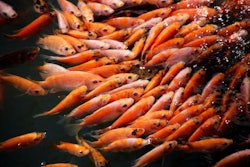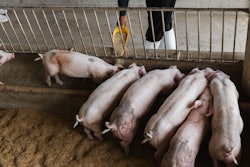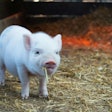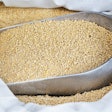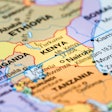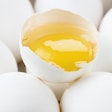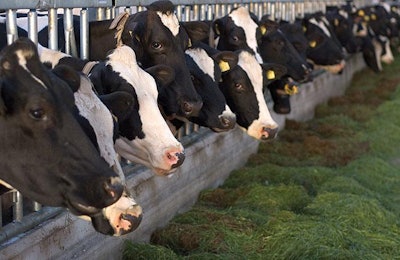
Coronavirus-related factors are being blamed for squeezing margins for milk production in northern India as feed prices rise and demand collapses.
Impacts of the government’s lockdown restrictions are affecting the lives and livelihoods of people across India, as in so many countries of the world. Among the food industries to be particularly hard hit is dairy in the northern state of Uttar Pradesh.
Among other factors, continued development of dairy production in the region depends on the availability of good-quality feeds for milking animals.
When the Indian government first imposed the lockdown in response to the novel coronavirus (COVID-19) pandemic, dairy production was held back by the lack of transportation, reports Times of India. Subsequently, the challenge shifted suddenly to a shortage of regular feed ingredients.
Dairy feed millers seek alternative feedstuffs
As feed manufacturers in the region sought alternative raw materials, their attention turned first to cottonseed. A useful feed ingredient for dairy feeds, supply was hit by the collapse of the textile industry. Byproducts from grain production — such as straw — are no longer an option as they have already been cleared after the last harvest.
For one dairy cooperative in Gokul, a partial solution to the feed ingredient shortage was presented in the form of molasses. A byproduct of sugar processing, molasses is mixed with other ingredients to make feed pellets for cattle. At just around 400 metric tons per day, feed output is much lower than usual, but it is sufficient to maintain some milk production by the cooperative’s members.
In his desire to keep his herd healthy, one farmer has turned to feeding his milking animals with stored grains. According to Times of India, he has also purchased grains from ration shops. These outlets sell basic foods to poor people at prices subsidized by the government.
These desperate measures are squeezing margins for dairy farmers. While feed prices have climbed sharply, they report receiving less money for their milk because the pandemic has reduced the demand from the cities.
Recently, floriculturists in another north Indian state have been cutting unsold flowers to feed cattle.
India’s national body for promoting the dairy sector — the National Dairy Development Board (NDDB) — has offered to assist in the reformulation of feeds for milk animals, according to a previous Times of India report.
NDDB says the use of novel ingredients such as corn gluten feed can help maintain reproductive efficiency, cow health and calf growth rates, as well as increasing milk yields. These parameters will all help dairy farmers to deal with the post-COVID-19 challenges, according to the NDDB.
Concerns over livestock feed, fodder supply gap in India
Over recent years, the country’s dairy sector has been expanding. According to the livestock census of 2019, the number of domestic bovine animals — cattle, buffalo, mithun (gayal) and yak — has reached almost 303 million, reported Hindu Business Line. Milk production increased to almost 188 million metric tons in 2018, pushing India to the top of the world rankings for output.
According to the National Institute of Animal Nutrition and Physiology (NIANP), this increase in production has exposed a widening gap between the demand for feed and fodder, and their availability. With these roughages already significantly in deficit in 2015, the Institute has forecast shortages by 2025 of 23% in dry fodder, 40% in green fodder and 38% in concentrates. These figures translate into volumes of 40 million metric tons (mmt), 21 mmt, and 28 mmt, respectively, in five years.
NIANP attributes the shortfall to increasing pressure on land for growing human food crops, as well as to inadequate attention to the cultivation of fodder crops. Grazing lands are being degraded, and just 4% of India’s total cropping area is used for the production of fodder crops. As a result, livestock farmers are feeding their animals more concentrates. This can lead to health problems such as acidosis, the institute says.
To rebalance ruminant diets for improved health and milk yields, Department of Animal Production and Dairying has been promoting the cultivation of a variety of green fodders. Hindu Buisness Line reports these include napier, marvel grass, moringa, maize, bajra, jowar, cow peas, velvet beans, thornless cactus, oats, berseem, rye grass and Chinese cabbage.


